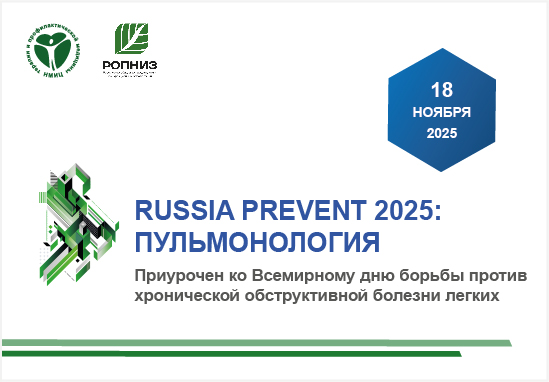Hypolipidemic effectiveness and safety of generic lovastatin
Abstract
Aim. To study hypolipidemic effectiveness and safety of generic lovastatin (Cardiostatin®). Material and methods. This open, cooperative study included 90 patients with coronary heart disease (CHD) and hypercholesterolemia (<10 mmol/l). All patients received Cardiostatin® in the dose of 20 mg/d, increased up to 40-80 mg/d, if needed. Dynamics of total cholesterol (TCH), low-density lipoprotein CH (LDL-CH), high-density lipoprotein CH (HDL-CH), triglycerides, hepatic enzymes, and C-reactive protein (CRP) levels was studied. Results. Cardiostatin® improved lipid profile to the same extent as original lovastatin. Target TCH level (<2,5 mmol/l) was achieved in 68,8% of the patients. In participants with initially increased CRP level, it had significantly reduced. Conclusion. Cardiostatin® demonstrated good hypolipidemic effects, at the same time reducing increased CRP level. Cardiostatin can be recommended for dyslipidemia and atherosclerotic pathology treatment.
About the Authors
D. M. AronovRussian Federation
V. V. Kukharchuk
Russian Federation
V. G. Kukes
Russian Federation
M. G. Bubnova
Russian Federation
References
1. Аронов Д.М. Лечение и профилактика атеросклероза. Москва «Триада-х» 2000; 411 с.
2. Blankenhorn DH, Azen SP, Kramsch DK, et al; the MARS Research Group «Coronary angiographic changes `with lovastatin therapy. The Monitored Atherosclerosis Regression Study (MARS)». Ann Inntern Med 1993; 119(10): 969-76.
3. Bucolo G, David H. Quantative determination of serum triglycerides by the use of enzymes. Clin Chem 1973; 19: 476-9.
4. Cauley JA, McTiernan A, Rodabough RJ, et al; Women’s Health Initiative Research Group. Statin use and breast cancer: prospective results from the Women’s Health Initiative. J Natl Cancer Inst 2006; 98(10): 700-7.
5. Davignon J, Montigny M, Dufour R. HMG-CoA reductase inhibitors: A look back and a look a head. Can J Cardiol 1992; 8(8): 843-69.
6. Downs JR, Beere PA, Whitney E, et al. Design and rationale of the Air Force Texas Coronary Atherosclerosis Prevention Study (AFCAPS/TexCAPS). Am J Cardiol 1997; 80: 287-93.
7. Friedewald WT, Levy RI, Fredrickson DS. Estimation of the concentration of the low dencity lipoprotein cholesterol in plasma, without use of the preparative ultracentrifuge. Clin Chem 1972; 12: 499-502.
8. Kane JP, Malloy MG, Parts TA, et al. Regression of coronary atherosclerosis during treatment of familial hypercholesterolemia with combined drug regimens. JAMA 1990; 264: 3007-12.
9. Lin R, Liu J, Peng N, et al. Lovastatin Reduces Apoptosis and Downregulates the CD40 Expression Induced by TNF-alpha in Cerebral Vascular Endothelial Cells. Curr Neurovasc Res 2006; 3(1): 41-7.
10. Mukamal KJ, Smith CC, Karlamangla AS, Moore AA. Moderate alcohol consumption and safety of Lovastatin and warfarin among men: the post-coronary artery bypass graft trial. Am J Med 2006; 119(5): 434-40.
11. Roeschlau P, Berndt E, Gruber W. Enzymatische bestimmung des gesamtcholesterines in serum. Z Scand Clin Chem 1974; 12: 226-31.
12. Ridker PM. Should statin therapy be considered for patients with elevated C-reactive protein? The need for a definitive clinical trail. Eur Heart J 2001; 22: 2135-7.
13. Scandinavian Simvastatin Survival Study Group. Randomised trial of cholesterol lowering in 4444 patients with coronary heart disease the Scandinavian Simvastatin Survival Study (4S). Lancet 1994; 344: 1383-9.
14. Serebruany VL, Miller M, Pokov AN, et al. Effect of statins on platelet PAR-1 thrombin receptor in patients with the metabolic syndrome (from the PAR-1 inhibition by statins [PARIS] study). Am J Cardiol 2006; 97(9): 1332-6.
15. Waters D, Higginson L, Gladstone P, et al. The CCAIT Study Group. Effects of monotherapy with on HMG-CoA reductase inhibitor on the progression of coronary atherosclerosis as assessed by serial quantitative arteriography. The Canadian Coronary Atherosclerosis Intervention Trial. Circulation 1994; 89: 959-68.
16. Weder AB, Serr C, Torreti BA, et al. Effects of lovastatin treatment on red blood cell and platelet cation transport. Hypertension 1991; 17: 203-9.
17. Whicher JT, Ritchie RF, Johnson AM, et al. New international reference preparation for proteins in human serum (RPPHS). Clin Chem 1994; 40: 934-8.
18. Zhao X-Q, Brown BG, Hillger L, et al. Effects of intensive lipid-lowering therapy on the coronary arteries of asymptomatic subjects with elevated apolipoprotein B. Circulation 1993; 88: 2744-53.
Review
For citations:
Aronov D.M., Kukharchuk V.V., Kukes V.G., Bubnova M.G. Hypolipidemic effectiveness and safety of generic lovastatin. Cardiovascular Therapy and Prevention. 2006;5(6):46-52. (In Russ.)
























































